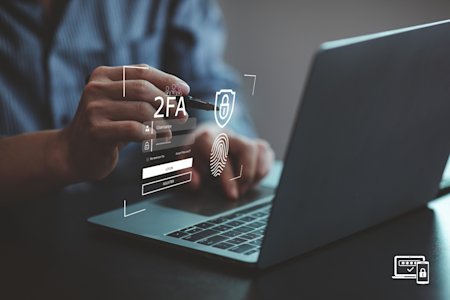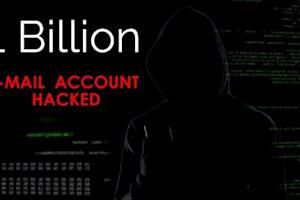As cyber threats continue to evolve, securing sensitive data has become a top priority for businesses. Relying on passwords alone is no longer sufficient to keep systems safe from unauthorized access. Multi-Factor Authentication (MFA) offers a powerful solution by adding additional layers of verification to the login process, making it far more difficult for attackers to breach systems.
In this article, we’ll explore what MFA is, how it enhances security, and the benefits and challenges of implementing it. We’ll also highlight how Splashtop uses MFA to provide a secure, reliable remote access experience.
What is Multi-Factor Authentication (MFA)?
Multi-Factor Authentication Meaning & Definition
Multi-Factor Authentication (MFA) is a security method that requires users to verify their identity through two or more independent factors. These factors can include something the user knows, such as a password, something they have, like a mobile device or token, or something they are, such as a fingerprint or facial recognition. This layered approach adds an extra step to the login process, significantly improving security.
Why is MFA Necessary?
MFA is critical in today's digital landscape because it strengthens security by requiring multiple forms of verification. Traditional single-factor authentication, such as a password, is often vulnerable to attacks like phishing or credential theft. By adding additional layers—such as an OTP (one-time password) or biometric verification—MFA helps protect sensitive information and systems from unauthorized access.
MFA security measures are vital in preventing cyber threats and protecting businesses and individuals from data breaches. Moreover, many industries require MFA to comply with regulations, such as GDPR or HIPAA, which mandate strict authentication methods to protect user data. Beyond compliance, multi-factor authentication also builds user trust by providing an additional layer of security, ensuring that sensitive information remains protected, even in the face of sophisticated cyber threats.
By implementing MFA, organizations not only reduce the risk of unauthorized access but also create a safer online environment for their users, building trust and confidence in their systems.
How Does Multi-Factor Authentication Work?
Multi-Factor Authentication (MFA) works by requiring users to present two or more verification factors before gaining access to a system or application. The process typically begins with the user entering their password (something they know). Following this, a second factor is required, such as an OTP (one-time password) sent to their mobile device or a biometric scan (something they have or something they are). This multi-layer authentication approach ensures that even if one factor is compromised, the additional factor(s) add a significant layer of security.
Different methods of MFA are available to implement this security mechanism, each with unique features and examples:
Multi-Factor Authentication (MFA): Methods and Examples
1. Two-Factor Authentication (2FA)
One of the most common forms of MFA, 2FA involves two steps to verify identity:
Example: Entering a password followed by a one-time password (OTP) sent to the user's mobile phone or email.
2. Authenticator Apps
Authenticator apps generate time-based, one-time passcodes (TOTP) for users to input after entering their password.
Example: Users log in with a password and then open an authenticator app (e.g., Microsoft Authenticator) to input a code that is valid for only 30-60 seconds.
3. Biometrics
Biometric authentication uses unique physical traits to verify identity.
Example: Smartphones and laptops equipped with biometric scanners can prompt users to provide a fingerprint, iris scan, or facial recognition after password entry.
4. Hardware Tokens
Physical devices are used as a second layer of security after entering a password.
Example: USB security keys (like YubiKey) plugged into a computer for authentication.
5. SMS or Email OTPs
One-time passwords sent via SMS or email are another MFA method, ensuring that a user has access to a trusted device or account.
Example: Logging in with a password and receiving a one-time code via SMS, which must be entered to complete the login process.
6. Device Recognition
Systems can recognize a device that has been registered as an additional layer of authentication.
Example: Users can mark a trusted device, such as their smartphone or computer, and are only asked for secondary authentication if they log in from a new or unrecognized device.
Each of these methods enhances security by requiring more than one factor to verify the user's identity, making it difficult for attackers to breach the system with just a stolen password.
Key Benefits of Multi-Factor Authentication (MFA) for Your Business
Implementing Multi-Factor Authentication (MFA) offers several key advantages for businesses, from enhancing security to improving compliance. Below are the top benefits of MFA:
1. Reduced Risk of Unauthorized Access
One of the primary benefits of MFA is its ability to significantly reduce the risk of unauthorized access to sensitive data and systems. By requiring multiple forms of verification, MFA makes it far more difficult for attackers to gain entry using stolen passwords or credentials. Even if one factor, such as a password, is compromised, the additional layers—like OTPs or biometric verification—act as powerful safeguards against breaches.
2. Protection from Phishing Attacks
Phishing attacks often succeed when attackers deceive users into revealing their passwords. MFA security measures, however, prevent these attacks from leading to unauthorized access because simply knowing the password is not enough. The second or third verification factor—whether it’s a one-time code, a fingerprint, or device recognition—blocks attackers from accessing accounts even if they have tricked a user into divulging their credentials.
3. Compliance with Regulations
Many industries are subject to stringent data protection laws and standards, such as the GDPR, HIPAA, or PCI DSS, which often mandate the use of robust authentication methods like MFA. By implementing multi-factor authentication, businesses ensure that they comply with these regulations, avoiding potential penalties while safeguarding sensitive user data. Additionally, multi-layer authentication systems help businesses meet audit and compliance requirements more easily.
4. Increased User Confidence
MFA builds user trust by providing an extra layer of protection, which reassures employees, customers, and partners that their accounts and data are secure. When users know that their information is protected by multiple security measures, they feel more confident conducting transactions, sharing sensitive information, and working within the system. This trust can result in higher engagement and stronger customer loyalty.
5. Prevention of Credential Theft
MFA mitigates the impact of credential theft, which is one of the most common attack vectors in cybercrime. Since multi-factor authentication requires multiple unique factors for access, even if a malicious actor obtains a password, they would still need to pass the second or third layer of authentication. This multi-level authentication prevents the success of credential-stuffing attacks, where stolen credentials are tested across multiple systems and accounts.
Incorporating MFA into your business's security protocols greatly enhances protection against a variety of cyber threats while boosting user confidence and compliance with regulatory standards.
Best Practices for Setting Up MFA (Multifactor Authentication)
Implementing MFA correctly is essential for maximizing security without causing unnecessary friction for users. Here are some best practices to follow:
Use a Combination of Authentication Factors: Implement multiple authentication methods, such as SMS codes, authentication apps, or biometrics, to enhance security.
Prioritize Phishing-Resistant MFA: Use modern authentication methods like FIDO2 security keys or authenticator apps instead of SMS-based codes, which can be vulnerable to phishing attacks.
Enforce MFA for High-Risk Accounts: Require MFA for privileged accounts, remote access, and critical business applications to reduce the risk of unauthorized access.
Enable Adaptive MFA: Implement risk-based authentication that adjusts security requirements based on user behavior, location, and device trust levels.
Regularly Review and Update MFA Policies: Continuously evaluate MFA settings and policies to ensure compliance with the latest security standards.
Understanding the Challenges of Multi-Factor Authentication
While Multi-Factor Authentication (MFA) significantly enhances security, it comes with its own set of challenges. Businesses must be aware of these potential hurdles to effectively implement and manage MFA systems. Here are some of the key challenges associated with MFA:
1. User Convenience and Friction
One of the most common challenges of MFA is the balance between security and user convenience. Implementing additional verification steps can cause friction in the user experience, leading to frustration. Users may perceive the extra steps as unnecessary, especially if they need to authenticate multiple times throughout the day, which can reduce productivity.
2. Cost of Implementation
For businesses, the cost of setting up MFA systems can be a barrier, particularly for small to medium-sized enterprises. MFA solutions require investment in software, hardware (such as security tokens), and the resources to train employees and manage the authentication system. Moreover, ongoing maintenance and updates can add to operational costs.
3. Compatibility Issues
Some legacy systems or applications may not support modern MFA methods, which creates compatibility challenges during implementation. Integrating MFA with older systems may require additional time, resources, or even upgrades to ensure compatibility. This can be particularly problematic for organizations using a mix of outdated and current technology.
4. User Resistance and Adoption
MFA requires users to adapt to new authentication methods, which can lead to resistance, especially among employees or customers unfamiliar with the technology. Businesses often face difficulties in educating users on how to use MFA correctly and why it is necessary. Without proper training and clear communication, there is a risk of poor adoption or incorrect usage, undermining the effectiveness of MFA.
5. Reliance on Mobile Devices
Many MFA solutions, such as those involving one-time passwords (OTPs) or authenticator apps, rely on mobile devices. This presents a challenge for users who may lose their device, experience technical issues, or be without it when attempting to log in. Additionally, not all users are comfortable using their personal devices for work-related security, raising privacy and accessibility concerns.
6. Availability and Downtime Risks
MFA can sometimes be rendered inaccessible due to external factors, such as server outages, SMS delivery failures, or issues with authenticator apps. If users are unable to receive their second-factor authentication, they may be locked out of critical systems, causing delays and interruptions in workflow. Businesses must ensure that their MFA systems are highly reliable to avoid downtime.
7. Phishing and Social Engineering Risks
While MFA strengthens security against many types of attacks, it is not entirely immune to phishing or social engineering tactics. For instance, attackers may attempt to trick users into providing their MFA codes or leveraging weaknesses in the system, such as SIM swapping to intercept SMS codes. Educating users on these risks is essential to maintaining the security benefits of MFA.
8. Accessibility Concerns
MFA methods, particularly biometrics or physical tokens, may pose accessibility challenges for certain users, such as those with disabilities. For example, individuals with limited mobility or vision impairments may find it difficult to use fingerprint scanners or authenticator apps. Ensuring that MFA solutions are inclusive and offer alternative methods is crucial for businesses to accommodate all users.
Understanding these challenges allows businesses to plan for more effective MFA deployment and ensures they take proactive steps to mitigate any obstacles that could arise.
Maximize Security with Splashtop: Leverage MFA for Safe Remote Access
Splashtop prioritizes robust security by incorporating Multi-Factor Authentication (MFA) into its remote access solutions, ensuring that users and businesses can securely connect to their devices from anywhere. By leveraging MFA, Splashtop adds an essential layer of protection against unauthorized access, ensuring that only verified users can gain entry to sensitive systems and data. Splashtop’s security features, combined with MFA, make it a reliable choice for businesses looking to safeguard their remote work environments.
Strong Security Features with MFA
Splashtop employs multiple security measures, including MFA, to create a secure remote access platform. With MFA, users are required to provide a second layer of verification, such as an OTP (one-time password) or an authenticator app, after entering their password. This prevents unauthorized users from accessing critical business systems even if login credentials are compromised.
Splashtop also offers flexibility in MFA implementation, allowing users to choose from various authentication methods such as email-based OTPs, SMS codes, and authenticator apps. This versatility ensures that Splashtop users can select the MFA method that best suits their business needs while maximizing convenience and security.
How Splashtop Helps Mitigate Potential MFA Challenges
Splashtop addresses several challenges commonly associated with MFA:
Ease of Use: Splashtop’s MFA process is designed to be user-friendly, minimizing the friction often associated with multi-factor authentication. With easy setup options and intuitive user interfaces, employees and IT admins can quickly adapt to MFA without facing significant disruptions to their workflow.
Device Flexibility: Understanding that reliance on mobile devices can pose challenges, Splashtop offers multiple MFA options, including email-based and app-based authentication methods. This ensures users can choose the method most accessible to them and reduces the dependency on a single device for authentication.
High Reliability: Splashtop’s infrastructure is built to ensure high availability, reducing the risk of MFA downtime. Even during rare network disruptions, Splashtop offers backup access methods, ensuring that businesses can maintain continuity while keeping security intact.
Compliance and Accessibility: Splashtop supports businesses in meeting regulatory requirements by providing compliant MFA options that align with industry standards like GDPR and HIPAA. Additionally, Splashtop’s platform is designed with accessibility in mind, offering MFA methods that can accommodate diverse user needs.
Choose Splashtop for Secure, MFA-Enhanced Remote Access
Splashtop’s commitment to security, including the integration of Multi-Factor Authentication, makes it an excellent solution for businesses looking to protect their remote access systems. By offering strong MFA options and overcoming common challenges associated with authentication, Splashtop ensures that businesses can safeguard their data and systems without compromising user experience.
For businesses seeking enhanced security, Splashtop provides a secure, reliable, and convenient platform with MFA-enabled remote access. By choosing Splashtop, you can trust that your organization’s remote work environment is protected by the latest security measures, ensuring safe access to your data from anywhere in the world.
Find out more about Splashtop’s remote access solutions, its features, and sign up for a free trial!





